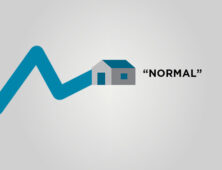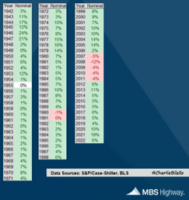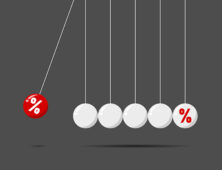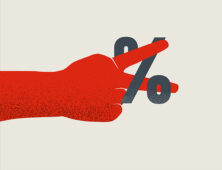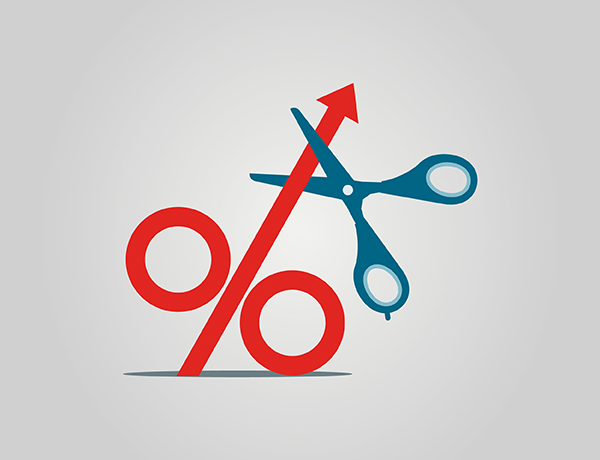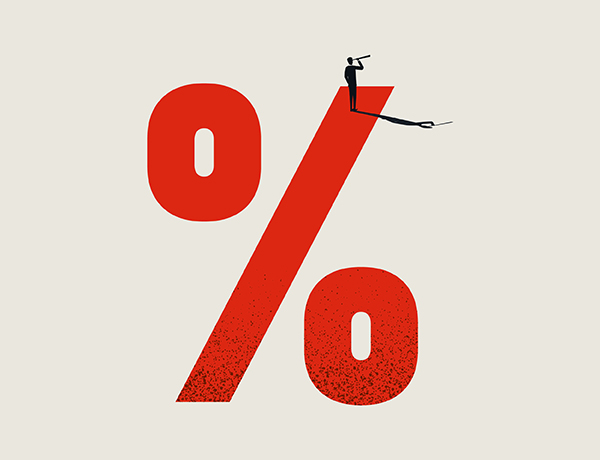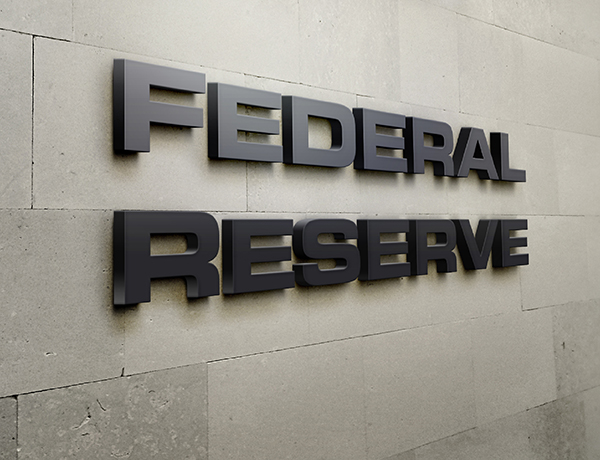Today’s Mortgage Rates in March 2023

March 31, 2023
Mortgage rates are slightly up this morning. However, with little news on the radar that will push them higher, we see little benefit in floating. We say lock.
Finally, A Good Surprise
PCE came in this morning showing inflation for February and unlike the rest of the surprises in the mortgage market over the last year, this one was nice!
Inflation came in at 0.3% beating the 0.4% expectations. Beating expectations is great however, the market seems to react little to good news and MASSIVELY to bad news. So, mortgage rates are just slightly better than yesterday.
Remember, We’re Holding On For May
We’ve talked about it tons of times, but here we are again…
Shelter costs comprise a huge portion of the PCE reading; while PCE dropped, shelter costs are up 8.2% YOY. Remember, looking at inflation data is like driving while looking in the rearview mirror. That’s because it takes so long for policy to impact spending. Then it takes a long time for changes in spending to be reflected in these reports.
Shelter costs are especially lagged because people sign leases for 12+ months so, when the people in charge of these reports gather data, it’s often already a year old!
Based on the lag between when real-time rents went up and when they showed in the data in 2022, we believe we can apply a similar timeframe to when they will go down… so we should see a dip starting in May.
A Flood Warning
If you’re in UT, this is for you.
Although this has been the best ski season ever, the amount of water coming for us this spring concerns many people. So many of our clients have bought flood insurance to give them peace of mind. This is a conversation to have with any of your clients but especially with first-time home buyers who don’t know what they don’t know.
If you would like an intro to a great insurance company that can get you or your clients a flood policy, give us a call. 😊
Mar 30, 2023
Mortgage rates continue to face upward pressure. We will maintain a locking bias.
Inflation Ain’t Looking Good
Tomorrow morning’s Personal Consumption Expenditures (PCE) report will show February’s consumer inflation. Current estimates have the Core Rate growing at .4% for the month, which is well above the .17% average we would need to maintain the Fed’s target 2% annualized rate of inflation.
As a result, the market could respond poorly when the number is released, especially if the reality is even higher than current expectations.
GDP Is NOT Slowing Down
The final reading for Q4 2022 GDP showed the US economy grew at a 2.6% pace, down .3% from estimates. Economists are expecting Q1 2023 will be around 3.2%.
This shows that in spite of all the Fed rate hikes, there is little progress toward slowing down this overheated economy. If this does not begin to trend lower quickly, rates will stay elevated for an extended period of time.
What About Unemployment?
At the end of the day, the Fed is trying to slow the labor market. They want both jobless claims and the Unemployment Rate to rise.
Now that most service and production-related companies who were forced to either halt work or greatly slow their output are now back to full capacity, we really need to see more people join the labor market. This would help raise the number of unemployed Americans and would help cap wage growth.
But from where could we add workers? Having access to affordable childcare would help many with young children get into the workforce. Maybe we add a couple of years to the age to receive Social Security benefits. Such solutions are what our elected officials should be considering. It is a difficult dilemma that we will be forced to eventually face.
Mar 29, 2023
Without much potential upside this week, we are recommending locking.
January Appreciation
Yesterday, we got appreciation numbers for the month of January. The Case-Shiller Home Price Index showed a seasonally adjusted -.2% appreciation in the month of January. However, it is still showing +3.8% appreciation year over year.
Now a lot of people are curious, “how far down are we from the peak of home values?” Well, according to Case-Schiller, housing values peaked in June 2022 and we are down about 3% from then.
Rent Growth is Just About Back to “Normal
The times of 10% rent increases are gone… well, they are gone in most places.
Rent growth is back below its pre-pandemic average of 2.8%. Rents in March across the country are up 2.6% while it is pretty sporadic across the country. With pockets of the mid-west up 6% while Vegas was down 3%.
The other thing to know about rent is that at the end of 2022, there were the most apartment buildings under construction at one time since the 70’s. 917k units were unfished at the beginning of the year which will provide about a 5% increase in the national supply of apartments.
Mar 27, 2023
We will maintain a locking bias.
Is History Repeating Itself?
Despite nearly $100 billion in bank deposits being withdrawn the week before last, the Federal Reserve assures us that our banking system is strong.
However, those who have studied the Savings and Loans crisis of the 80s see similarities in what we face today. At this point, the Federal Reserve clearly made a major error in failing to see the stress that rapidly rising interest rates caused on many banks, primarily smaller institutions that experienced massive growth over the past few years.
It is the job of the Fed to oversee banks and anticipate troubles before they occur. Although it could cause undue panic to see our Fed Chairman and other members lose their positions, strong arguments can be made that there should be some accountability for what has occurred.
How Deep Will This Go?
The spread between the 10 and 2 Year Treasury Note yields is narrowing, indicating that a change in Fed policy is getting close.
The inflation issue the Fed is fighting was largely a part of the US Treasury pumping cash into consumers’ bank accounts at a time when production of goods and services halted. Today, we have the opposite problem. Savings levels are near all-time lows, credit card debt is at an all-time high, and production of goods is at full capacity.
The timing of the Fed’s reversal will dictate the depth of how deep the slowdown will be. At this point, markets are now betting the change in Fed policy will occur sooner than thought a few weeks ago.
Rates Moving Higher
From a technical standpoint, mortgage rates are not in a good position.
Last week, we same both mortgage bond and the 10 Year Treasury note rates fall below their 200-day moving average. Each time this has happened, a sharp climb has followed it in interest rates. We have had both rates deteriorate today and get back above their 200 DMA.
Unless there is a strong reason for the bond market to rally, anticipate rates moving higher in the near term.
Mar 24, 2023
Mortgage bond prices have tough ceilings that they need to break through for rates to take another step lower. In the meantime, we will maintain our locking bias.
Large Purchases are Slowing
Durable Goods Orders for the month of February was reported this morning, showing a loss of .1%. This is well below the market’s estimates of a .6% gain. In addition, there were downward revisions to the prior month, meaning this number would have been even worse.
Economists are closely tracking new orders of long lasting goods, as it is a reflection of the buying patterns of consumers. If this continues to slow, it could be a sign of more weakness to come in the US economy.
Losing Faith in the Fed
While the Federal Reserve continues to assure us that banks in the US are strong, we are also watching the Fed’s balance sheet climb rapidly. In fact, the Fed’s balance sheet has risen by $400 billion in the last two weeks alone.
Considering that the Fed is the lender of last resort for banks to borrower from when they are in need, there is likely more to this story than we are being told. It seems that the Fed and the US Treasury are not being upfront with their comments, which is adding even more distrust in our central bank and our government leaders.
Lower Rates Coming?
Yields on the 10-Year Treasury note are now at 3.37%, which is below their 200 day moving average. If we see this yield continue to fall, mortgage interest rates will follow. If we continue to learn of continued bank struggles and distrust in our financial system, we will eventually get the much needed drop in rates we have been anticipating. Let’s hope we see lower rates as we head into the busy months of homebuying.
Mar 23, 2023
We have had a nice run and mortgage rates are down over .5% from a month ago. We are now facing a strong ceiling with the 200-day moving average right above mortgage bonds. We don’t expect any news to decisivly move bonds above this. We recomend locking in the past months gains.
Was That The Last Hike?
The Fed hiked 25 bps yesterday as we thought. However, what we didn’t anticipate was the amount mortgage rates improved after the announcement. We said that the 25 bps hike was priced into the market, which it likely was.
The reason rates got better was the massive change in Powell’s tone when it comes to upcoming hikes. For months, every meeting has been followed with a message that further rate hikes are needed.
That changed yesterday. Powell changed his stance from certainty in additional “hikes” to “additional tightening” on an as-needed base.
Mortgage rates liked this and are down between .125-.250% today.
What’s The Update on Banks?
Background: There has been a mass pull of deposits from small regional banks into larger banks.
Why? Because people are scared their local banks will not receive the same treatment from the government if they default. So, they are putting their money in a “safer place”.
Both State Senators and media people have been trying to nail down people from the Treasury to get a solid answer to what will happen if smaller regional banks default similar to SVB to provide their state’s people with some certainty in their local banking system.
And the answers have been pretty concerning. They can be concentrated down to if the failure of the bank will have a significant economic impact, the government will take extreme measures. If not, we’ll cross that bridge when we get there.
Mar 22, 2023
With the expected volatility after today’s Fed meeting, we are holding a locking bias. Yes, the potential hike should already be priced into the market. However, there are a lot of people hoping for a miracle and if it doesn’t happen, the MBS market will feel it.
To Hike, or Not To Hike, That Is The Question
Today is Fed day, which regardless of the outcome of the meeting, will be volatile.
Do we think it’s a good idea for the Fed to hike rates today? No.
Do we think they will anyway? Probably.
Despite the fact that the banking sector is a dumpster fire and we are finally starting to see drastic actions taken by large companies to reduce their workforce (which unfortunately, is a part of the Fed’s goal), it’s likely that they will hike rates today out of principle. They do not want any question of an early pullback that could spark inflationary actions throughout the economy.
They missed the ball when they said, “inflation is transitory” and will likely not allow themselves to fall into the same trap even if it means going so far the other way that we break something (like the banking sector).
So, What Does This Mean For Rates?
Well, it really depends on how Jerome Powell handles the Q&A around inflation and if he signals a pause from here.
The general consensus is there will be a 25 bps hike, so it should already be priced into mortgage rates. If that is right and during the Q&A section, Powell holds strong that we have more room to hike before inflation is less of a concern, mortgage rates will shoot up.
However, if he signals that maybe enough has already been done and we need to wait to see the full effect of the 500 bps rate hikes has on our economy, mortgage rates may appreciate that and remain steady or come down.
Cash Is King
With mortgage rates in the 6’s, there are more and more cash buyers. Last year at this time, we had about 24%, cash buyers. Now rates are a couple of percent higher than then and we have seen that percentage increase to 28%.
Mar 21, 2023
The Fed is meeting tomorrow and will announce if they are going to stick with the expected 25bps hike in the Fed Funds Rate or if they will shock the market and put a hold on hiking. Based on their history, the latter would shock me. We are holding a locking bias going into Wednesday’s announcement.
131 Months Later…
The streak of 131 months of consecutive year-over-year home value increases is over. Median home values fell by 0.2% to $363,000… so they’re only down about 700 bucks.
At the end of the day, median home values are a poor way to look at home appreciation because it’s going to weigh heavily toward the price range that the majority of transactions have been happening in which has been lower.
While news headlines are driving a lot of fear into the housing market, keeping a perspective on long-term trends in real estate is essential. Like the fact that in the last 81 years, home values have appreciated 73 years, been flat 1, and have only declined 7.
Party Like It’s 1999
Not only did we break the longest month-over-month decline in home sales since 1999, but home sales had their most significant jump since 2020.
Obviously, home sales have been plummeting due to mortgage rates, but the significant rate dip that we saw between November and early February likely fueled the reversal in purchase transactions.
More Misleading Headlines
The other scary headline that is being pushed this morning is that home inventory is up 15% year-over-year. This is true, however; it’s up 15% from last year’s all-time low. Again, it’s important to keep perspective so you don’t fall into the panic trap that the news pushes for clicks.
Here are home inventory levels since 2018.
Mar 20, 2023
I expect to see volatility high ahead of Wednesday’s report. With yields near a strong floor of support that will hinder much of a rate drop from here. We will maintain a locking bias.
Another Banking Casualty
UBS will be purchasing Credit Suisse, in a government-brokered deal that will render an estimated 16.3 billion in debt worthless. Credit Suisse has been an icon in the worldwide banking industry for 166 years. Considering how many recessions and economic meltdowns this institution has endured, it underlines the understated significance of the potential of what we are now facing.
While our central bankers assure of the financial stability of the US banks, many depositors have lost faith in the assurance of our system and are now distributing deposits in excess of the FDIC-insured limit around multiple institutions.
If the Fed continues to hike rates once again on Wednesday, we could see trust in the Fed continue to shrink as more banking issues possibly come to life.
NOW Is The Time to Prepare
Yields on the 10 Year Treasury Note have fallen sharply as awareness of the current banking system has come to light. Now that we are more certain that the rate hiking cycle is soon to come to an end, stock investors are seeing hope for the end of the bear market.
With the 10 Year yield now at 3.42%, we aren’t far from the critical floor that if yields break beneath we could see a significant decline in rates. This would take mortgage interest rates down with it and could stimulate a strong surge in housing activity.
There are many potential buyers and sellers who have held off just waiting for rates to improve. We are so very close to this being triggered. If you are in the real estate or finance-related industries, now is the time to prepare.
Wednesday Will Be Very Telling
Tomorrow is day one of the next Federal Reserve Open Market Committee meeting, with an interest rate announcement set for Wednesday at noon MDT. While it is widely expected the fed will continue the hiking with a 1/4% increase announced. Along with many others, I strongly believe the Fed needs to hold off on any tightening until the extent of the crisis is known and under control.
Mar 17, 2023
Yields on the 10-Year Treasury Note are beneath their 200-day moving average. It seems unlikely bond prices will move much lower before the Fed announcement. We will suggest a locking bias in the near term.
Will Bank Failures Stop the Fed?
The latest in the banking saga is that Silicone Valley Bank’s holding company, Silicone Valley Financial, has filed for bankruptcy. This will clear the value of equity holders and creditors while the FDIC protects the depositors.
First Republic Bank has been the target of short sellers, which has driven the stock price down from $120 to $34 a share. This has added great fear of creating another run on a US bank, as news spreads weakness due to a high number of uninsured depositors. We can only hope that the Federal Reserve is watching closely and is prepared to help lessen the risk of additional bank failures by pausing their planned rate hike scheduled for next Wednesday.
Did We Not See This Coming?
In the last week alone, the Federal Reserve has increased its balance sheet by approximately $300 billion as they provide liquidity to struggling US banks. This essentially unwinds about 3 months’ worth of the Quantitative Tightening program they initiated to help slow the strength of the US economy and reduce inflation.
It seems the Fed was caught entirely off guard by the level of damage their excessive rate hiking and balance sheet reduction plan has been causing to the banking industry.
Since the Central Bank is responsible for ensuring our banking system operates smoothly and has the liquidity to meet demands, it is questionable how these issues seem to have come out of nowhere. Is it a lack of competence or a lack of oversight? Hopefully, the truth is revealed and any negligent Fed member loses their job.
More Volatility
Next Wednesday the Fed will meet and announce its next move with interest rates. Although the heightened talk from Chairman Powell has been to push rates higher and faster than planned, the current banking crisis could cause them to reconsider their updated strategy.
I would love to say that I have faith they will do the right thing and pause hikes while this banking crisis plays out, but I have little confidence in their ability to do what seems to be the right thing.
They are over-committed to hiking rates so, we could see a move higher. It will be a volatile couple of days between now and then.
Expect to see mortgage rates bounce from one direction to the other.
Mar 15, 2023
Although mortgage rates have improved this morning, there are tough levels of resistance they would need to overcome for rates to get much better. As a result, we are going to suggest a locking bias to take advantage of the recent rate improvements.
Good Inflation News
We finally received some good news regarding the fight against inflation. This morning’s Producer Price Index (PPI) showed that manufacturing inflation fell by .1% in the month of February, which is well below the .3% gain the market anticipated. On a year-over-year basis, we fell from a 5.7% pace down to 4.6%. Although this doesn’t directly reflect in a reduction of consumer inflation, we know that when the cost to produce goods falls, it will add downward pressure to the prices consumers pay.
When you consider that the peak pace of producer inflation was 11%, falling to a 4.6% level is sure to help the Fed realize that they are making progress and may not need to be more aggressive in their plans for future rate hikes.
Retail Sales Fell as Well
Retail Sales also came in showing a loss of .4% in February. This number fell sharply due to the unexpected drop in demand for used car purchases. Since many car leases run on a 3-year term, most expected the drop we saw in lease activity three years ago at the start of Covid would cause a supply issue today that would drive used car prices higher.
Even in the wake of shrinking supply, to see the demand fall like this is a surprise. Since used cars heavily rely on traditional bank loans for financing, the higher rates for car loans appear to be pushing many out of the market. This is also adding downward pressure to used car prices which decreased by 2.8% in the month of February alone.
Banking Crisis Hopped the Pond
The banking crisis has now spread into Europe, where several European banks are now at risk. Although the European Central Bank is sure to step in and save them, this adds more scrutiny to the plan to continue rate hikes both here in the US and abroad.
The world does not want to see a systemic banking crisis, which means that many central banks may soon be forced to consider cutting rates to help stabilize their financial systems. This is helping improve mortgage interest rates here in the US as more and more economists begin to question in the Fed will be able to continue with their rate hike plans.
Mar 14, 2023
With high levels of volatility, mortgage rates have experienced little improvement in the past few trading sessions. We are going to suggest a locking bias until we find a point of price stability.
Comin’ In Hot
The Consumer Price Index (CPI) for the month of February was reported today, and once again inflation is coming in hot. The Headline number showed that prices increased by .4%, with the year-over-year number falling from 6.4% down to 6%. When you strip out volatile food and energy prices, the Core rate showed an increase of .5%, with the year-over-year number falling from 5.6% to 5.5%.
Once again, it was Shelter Costs that were primarily to blame for the rise, increasing .8% for the month and up 8.1% year over year. Shelter has up to a 12-month lag which should soon begin to help reduce CPI inflation. Recent data is showing significantly lower rates of growth, which will be reflected in the next 12 months of CPI reporting. In the meantime, we are stuck with what seems to be higher rates of inflation than the Fed is willing to accept.
Expect Another Rate Hike
Today’s hot CPI report is likely to keep the Fed on track to raise rates at their meeting next week. However, the market is now expecting to see only a ¼% rate hike, with some economists believing the Fed will choose to “pause” after this next round.
The Fed has a long history of driving rates higher until something breaks. After last week’s bank meltdown, we are starting to see potential cracks in the financial system that could cause the Fed to hold off on future rate hikes.
Now that the Fed is aware of the crisis, banks are able to borrow money against their bond holdings to prevent more bank failures. It will be interesting to see how the Fed manages the shift in its balance sheet in a way that doesn’t cause further panic in the markets or add upward pressure to inflation.
Hope For Better News Tomorrow
Tomorrow we will receive the Producer Price Index (PPI) report which will show price gains in manufacturing for the month of February. Excluding volatile food and energy prices, the Core rate is expected to fall from 5.4% down to 5.2%. This would be good news for the bond market, which we could use right now.
Mar 13, 2023
What Happens When a Bank Fails?
The big news from Friday was that Silicon Valley Bank (SVB) imploded in a stunning downfall that completely shook the financial markets and spread fear of a deeper banking issue brewing. SVB was a bit unusual, as it heavily served clients in both the tech and crypto industries, which have been battered over the past 12 months.
The overall concern is the number of competing banks that are facing the same exposure, as well as what will happen to the monies owed to clients who have deposits in excess of the $250,000 FDIC limit.
Since many corporations likely had their operating accounts with SVB, we can expect to see a trickle-down impact of this collapse if they are not paid back in full. Given that this is the first major bank to fail since 2008, this could be an ominous sign.
The good news is all deposits should be distributed back today..
Inverted Yield Curve
A key challenge banks are facing is related to the inverted yield curve, which is where shorter-term rates exceed long-term rates. Since banks pay depositors a return that is based on the short-term market and lend much of their portfolio charging rates that are based on longer-term yields, they are in many cases not earning enough of a spread to make a sufficient profit.
This is cutting into bank profits and impacting their balance sheets. In addition, banks are holding assets that are earning minimal returns from when interest rates were low. Because there is an inverse relationship between interest rates and price, today’s higher rate environment has significantly impacted the value of their assets. Since banks must hold a fixed asset-to-loan ratio, lower asset values restrict their ability to lend money.
This plays into the overall lack of liquidity in the US economy that is helping to lower inflation.
Could We Drop Rates?
While markets have been fearing a step up in the pace of the Federal Reserve tightening financial conditions, this morning we will see the feed actually loosen economic conditions. This will undoubtedly be in the form of providing liquidity to banks to avert a liquidity crisis.
It is also possible that the Fed will be forced to stop raising rates and possibly even start to cut rates. This is a huge change from what the markets expected early last week. We will soon see if there are other cracks in the system created by the pace of Fed rate hikes.
In addition to today’s Fed policy change, the importance of tomorrow’s Consumer Price Index report can not be overstated. If it comes in below expectations, it could provide the Fed with the green light to begin to cut rates soon. We could see mortgage rates fall sharply in the near future. We will start today with a floating bias. Watch the markets closely, as I expect volatility to be high.
Mar 10, 2023
The next opportunity we have to see lower mortgage rates is after Tuesday’s Consumer Price Index report. Until then, this is likely as low as we will see rates fall. In the short term, we will have a locking bias.
Jobs Data Shows Mixed Results
This morning’s Bureau of Labor Statistics (BLS) report showed a bit of a mixed message on the strength of the US labor market. First of all, the headline number of new job creations showed there were 311,000 new hires in the month of February. This far exceeded the market’s expectations of just 205,000.
However, the Unemployment Rate rose from 3.4% up to 3.6%. In addition, Average Weekly Earnings were down .05% for the month. Since wage growth is a significant indicator of future inflation, this was welcomed news.
Overall, this report was between neutral and slightly good news for the mortgage bond market. Although mortgage rates responded by dropping sharply in early morning trading, we could see high levels of volatility throughout the day as investors digest the info in the details of the report.
Getting Closer to Healthy Financial Balance
US stock markets have taken a beating the past few days, with the S&P 500 falling beneath its 200 day moving average yesterday. The interesting part to this is that we are finally seeing an inverse relationship between stock and bond prices, meaning that interest rates improved as the stock market fell.
Since the bond market is considered a safe haven when stock fall, this is a sign of a more balanced and healthy financial market. This also could show that bond investors are becoming increasingly more comfortable with trusting that Treasury yields have peaked. Although no one knows for sure, there are indications that support this theory.
Wait, is that a Crack?
We are starting to see possible cracks in the labor market. A longer term look at the number of employed Americans shows that we are getting back to a growth rate that aligns with what we had in 2019. Since there were millions of jobs lost as a result of Covid, we expected to see rapid job gains as Covid benefits expired and people went back to work. We have most notably had major gains in the Leisure and Hospitality industries.
We know that this level of job growth will not continue now that we nearing pre-pandemic levels. The Fed needs to consider this and stop threatening the markets with ½% rate hikes. They need to stick to their original plan and give it time to work.
Mar 9, 2023
Mortgage interest rates continue to show high levels of volatility. We are hopeful that current support in the bond market holds. Although we would like to float into tomorrow’s BLS report, we do so with great hesitation. Job reports have not been favorable for interest rates in a while. So if you do choose to float, know that we could once again see an upward surprise that could drive rates higher.
Chairman Powell Nails it Again
Fed Chairman Jerome Powell was back in the hotseat once again yesterday, this time testifying in front of the House of Representatives. It was again a series of political stump speeches from members of the Congress with both parties mainly focusing on their respective views of whether the debt ceiling should be raised. There is no doubt that this subject has consequences either way, so hearing the arguments for each side was valuable.
However, the responses from Chairman Powell mirrored those spoken the day prior in front of the Senate, so the impact to the markets was muted. In the end, the Fed will be dependent on the news that transpires between now and the next Fed announcement on March 22nd.
If the data continues to come in stronger than anticipated, we could see a ½% rate hike. However, that would be a bold move and would be a change from the course the Fed has outlined. I still don’t see a ½% hike as the likely outcome.
I believe they need to stay the course and believe in their original plan. They front loaded rate hikes knowing they take months to fully kick in. A diversion from the plan would tell people they don’t fully have a grip on what is happening.
I’d Settle for a Slowdown
Yesterday’s ADP Employment Report came in showing there were 242,000 new jobs created in the month of February, which was well above the markets’ expectations of just 200,000. Although the ADP report gets little attention, it can serve as a preview to the more important Bureau of Labor Statistics (BLS) report that follows on the proceeding Friday. Since the ADP report was strong, this could indicate that we could also see a BLS number that exceeds expectations.
At this point, the market is expecting the BLS report to show about 215,000 new jobs. With last week’s Unemployment Claims climbing from 190.000 the week prior up to 211,000, there is hope that we could start to see more weakness. However, there is no doubt that we are in an extraordinarily tight labor market. The near term direction of mortgage rates will be heavily reliant on tomorrow’s report.
Good to be Average or Below Average?
The average rate on a 30 year fixed mortgage is once again above 7%. Keep in mind that if you are a real estate agent or homebuyer, not all mortgage companies are evenly priced. As you can see from below, City Creek Mortgage is well below the national average rate.
We focus on price sensitive consumers who are looking for an amazing client experience while also saving money. This is a tough market for all in the real estate industry. We work hard to earn the trust of our clients and referral partners and make everyone look like heroes in the end.
Mar 8, 2023
Mortgage rates have continued to trend higher the past couple of days. With Friday’s Bureau of Labor Statistics report holding considerable weight on the near term direction of interest rates, we will maintain a locking bias.
Chairman Powell Holds His Ground
Yesterday’s Senate hearing with Fed Chairman Jerome Powell played out just as expected, with both Democrats and Republicans placing blame for our inflation issues on the opposing party. It seemed more like a series of political party stump speeches than a real discussion of how to move forward. Although strong arguments were made by each party, very little was said that market investors aren’t already aware of.
However, we did see mortgage rates deteriorate as Powell reinforced his commitment to fight inflation, which included an expectation confirming that rates will be pushed higher than originally anticipated and that the pace of hikes could climb above the current ¼% going forward.
In the end, I believe Chairman Powell held his ground in the battle he faced from both parties. He is a man who is focused on the duel mangate of the Federal Reserve – achieve maximum employment while maintaining the target of 2% consumer inflation. There are both winners and losers in this battle. He is willing to see some parish for the good of the whole.
Inverted Yield Curve Widens
Yields on the 2-Year Treasury Note surpassed the 5% threshold yesterday. The only time we have been at this high of a rate since the year 2000 was for a brief period in 2006. Importantly, this increase pushed the spread between the 2- and 10-Year Treasury yield greater than 1%. The “Inverted Yield Curve” has proven to be one of the strongest predictors of a pending recession.
Given the gap between the two, statistically, we should be preparing ourselves now for an economic downturn to likely hit later in 2023 or sometime in 2024. With the additional tightening we can now anticipate from the Fed going forward, it seems the Fed will be ensuring a recession at some point before the inflation battle is won.
Where’s the Homes?
Single family listing inventory hit a fresh low for 2023, as the recent spike in mortgage rates continues to hammer down on the housing market. Coincidently, mortgage applications sunk to a 28-year low. This is terrible news for both real estate agents and loan officers who have already been struggling for the past 12 months. Regardless of the ones who claim that higher rates have not created a mortgage rate lockdown, the data proves otherwise.
When a potential move-up buyer will need to drop from their $500,000 loan down to a $320,000 loan just to maintain their same monthly payment, most will wait until the gap in rates has narrowed.
Remember, most homebuyers purchase a payment, not a home. This is something many economists don’t take into consideration. Just because they can afford to buy in this market doesn’t mean they will.
Mar 7, 2023
With Chairman Powell speaking, the risk of volatility today is high. We will maintain a locking bias.
Is a No-Landing Possible?
Cases to support the US economy falling into a recession seem to far outweigh the prospect of what is now called a “no landing,” where the US economy sails through this time without any economic downturn.
Given the pace of Fed rate hikes combined with their Quantitative Easing, which is pulling significant amounts of capital out of the economy, it is farfetched to assume that we will continue to see economic growth through this entire tightening cycle.
For one thing, falling inflation will reduce pricing power for corporations which will lead to lower profits. In turn, this should negatively impact stock prices over time. This doesn’t scratch the surface of all combined forces that will serve as headwinds to our economy in the longer term.
The Pull Forward Effect
Outside of higher mortgage rates, another factor that has led to our low home inventory problem is the “pull forward” effect. This is where purchases that would have taken place in the future are pulled forward and made early.
This clearly happened to our housing market during the 2020 – 2022 boom. The low-rate environment combined with rapidly rising prices caused many who would have sold their homes over the next few years do so early to take advantage of the lower payment opportunity.
As a result, we are left with a lack of people wanting to list their homes, since so many recently made a move. This will take time to work its way out of our system to where we can get back to serving more reasonable levels of homeowner selling demand.
Fed Chairman Speaks Tough
Fed Chairman Jerome Powell is currently testifying before the Senate. As expected, he stated that we can now expect to see the terminal Fed Funds Rate to reach a higher level than previously anticipated and that we could also see the pace of future hikes increase.
Given that this was already to blame for the reason we had a greater than 1% move higher in mortgage rates in February, it’s difficult to explain why the market appears to be shocked by the news. Mortgage rates have been moving higher once again this morning.
However, it seems like once Powell is finished speaking, we could see the bond market settle down and recover some of its early losses this morning.
Mar 6, 2023
Although there is no immediate need to lock at this moment, floating remains risky. The safe play is to lock on loans that need to close soon. Floating longer term could prove to be the wise choice if Friday’s BLS report shows weakness.
Are Job Growth Numbers Real?
This week is an important one for mortgage interest rates, with February’s job growth data to be released by the Bureau of Labor Statistics (BLS) on Friday. Given the blockbuster announcement last month that there were 517,000 new jobs created in the month of January, the markets are waiting to see if the labor market is truly as hot as this report showed.
While most economists are expecting of approximately 200,000, it is possible that we could see a lower number than this. Since many of the gains shown in January were due to seasonal adjustments and not true job creations, we are hoping for a more accurate picture in this report of the true condition of the labor market.
Will Powell Save Us or Tank Us?
Fed Chairman Jerome Power will be heading to Capitol Hill this week, where it is highly anticipated that he will echo his fellow Fed members in stating that the Fed Funds Rate will likely push higher than most believed just a few weeks ago. The case for higher rates will be justified by January’s strong BLS report, an upside surprise to January’s CPI inflation report, and strong consumer spending.
Given that he will be testifying before a Senate panel, we can expect to see Democrats push back on the notion that more needs to be done to slow the strength of the labor market. Further, we can anticipate that Republicans will be hammering down on inflation to place blame on the Biden Administration for the predicament. Market volatility could be high as Powell speaks and investors respond to any hint of hope or doom in the battle to overcome inflation.
This Isn’t 1970’s Style Inflation
One key point to reiterate is the reason why we are facing high inflation today. Today’s inflationary pressure were a result of supply being restricted during covid lockdowns (because manufacturers lacked the labor force needed to produce goods and services). At the same time, the money supply was greatly inflated, which provided consumers the ability and eagerness to spend. When you have too many dollars chasing too few goods, this is how inflation is created.
With the Fed currently sucking money out of the system and raising interest rates, combined with supply chains getting caught up, the inflation issue will not last long. The Fed needs to relax and stick with their plan. It will turn out just fine.
With some bond yields now at yields not seen since at such high levels since 2007, I am becoming increasingly hopeful that we will soon see the end of this market cycle of rates moving higher. I continue to believe that we will see lower mortgage rates as the year wears on. A look at a longer-term history of 2-Year yields shows the peak in 2007 that we are now matching was immediately followed by a steep plunge as the US fell into a recession. History often repeats itself.
Mortgage bonds are finally showing some strength. However, the remain trapped back in the channel in which they were stuck early last week before making a break in the wrong direction. There is a great deal of risk in floating with Fed Chairman set to testify. In prior speeches, he has stated that he will consider longer term trends consisting of many months of data before changing his planned trajectory.
Well, since that seems to only apply to data showing weaker inflation, one strong month of data may have convinced him to drive rates even higher.
Mar 3, 2023
Mortgage bonds are showing technical signs of rates improving. We will switch to a cautiously floating stance if you are able to closely monitor the markets.
Are Taxes the Solution to Inflation?
One of the possible solutions to fight inflation that is rarely discussed is raising income taxes. Generally, I am not one to would support the idea of higher taxes. However, most of my career has been during times when inflation was low, so my outlook has been on finding ways to stimulate growth.
Since we have lived through a sustained period when the Fed was trying to stimulate inflation, the idea of having inflation is foreign to many of us. Unfortunately, inflation disproportionately impacts the lower and middle classes. Higher food and energy prices really don’t change the lifestyle of wealthy people, but can make the difference of having to choose between paying a power bill or having food on the table for many families.
Although the tax cuts we had in 2018 are set to expire in 2025, it would help cut inflation if this temporary tax cut were to end in December 2023. Again, this is hard for me to say, but this option should be on the table as a solution to help in the battle against inflation.
Far from a Real Estate Crash
Purchase applications are back to 1995 levels, falling dramatically after mortgage rates took a turn for the worst in the first week of February. No surprise inventory and new listings are both down as a result. Low inventory is preventing home values from falling, which shows that current homeowners are not in distress.
The reality is that we are far from a housing crash. In today’s market, there are more people wanting to buy than there are homes available. Although the higher rates of today could be causing some buyers to wait, this truly could be an opportunity for many to purchase a home and ask the seller to agree to pay for a temporary rate buydown.
There will be opportunities to refinance when rates eventually fall.
Hiking Too Far is On-Brand
The Federal Reserve will go too far once again. This is their track record and once again they seem determined to ensure they do not ease too soon. For this to happen, they will intentionally push rates higher than they need to be to accomplish their goal. Based on recent comments from Fed members, they plan to hold rates high well into 2024. Since mortgage bond investors will respond much more quickly than the Fed, mortgage rates will fall before the Fed takes action to lower the Fed Funds Rate.
Mar 2, 2023
Mortgage bonds are back in a downward trading channel which shows that rates have more room to climb before finding stability. The average 30-year fixed rate is now up above the 7% level and will likely rise to match the highs we saw back in 2022. Until mortgage rates show signs of improvement, we will maintain our locking bias.
Yields Through the Roof
Yields on the 10-Year Treasury Note were 1.73% one year ago. In overnight trading last night, they again breached the 4% level. This move represents a break that could take yields up above 4.3% in the near term. This is clearly a response to the realization that the Federal Reserve will become more aggressive in its fight against inflation. Another tool to help fight inflation will be higher mortgage interest rates.
Mortgage-backed securities made another step in the wrong direction, which caused mortgage rates to push higher. This will add additional pressure to the housing market and further slow the number of new listings. We can expect new home builders to become more aggressive in pricing, which again deters existing homeowners who are not forced to sell from reducing their prices to compete with the new construction market.
If you are a real estate agent looking to sell listings, we will help you by helping to pay down the buyers’ interest rates with our one-year rate buy-down program. This will drive you more business.
There truly is no explanation for how muted the response has been to higher interest rates in our economy. Is the rosy picture of massive consumer demand in January real or is this a blip? Something doesn’t feel right to me. We will see how the coming months’ reports look.
Hope for Rates!
The Bureau of Labor Statistics generally releases its estimates of new job creation on the first Friday of every new month. However, since the first day of March hit on a Wednesday, we must wait until next Friday to see how the labor market performed in the month of February. It was the January labor report that showed there were 517,000 new jobs created that month. That was the initial driver that sent mortgage rates 1.25% higher.
If next Friday’s report shows a weak number, we could see mortgage rates respond positively. This report will not have the same seasonal adjustment factor that artificially showed a stronger labor market than reality. Further, many temporary holiday jobs will have been lost. There is hope for mortgage rates after all.
Labor Market still Strong
The labor market is again flexing its muscle, with last week’s unemployment report showing that there were only 190,000 new claims. This is insanely low and points towards a savagely unhealthy labor market. Remember, we need to see this number climb up to about 320,000 new claims a week for the Fed to have accomplished its goal of weakening the labor market. Once again, this defies the economic theory that higher interest rates will increase layoffs.
Mar 1, 2023
Mortgage bonds are trading in a tight range. It seems unlikely this will hold for long. Mortgage bonds will soon be forced to make a decision. With the current pressures favoring a break beneath support, we could soon see interest rates take a step higher. In the meantime, we will maintain a locking bias.
Inflation Across the World
Stronger inflation data out of Europe has added upward pressure to global interest rates. The surprise higher reading is like what the US experienced with the last Consumer Price Index report. As central banks around the world push their equivalent to our Fed Funds Rate higher, this creates more competition for global investors to consider as they chase higher yields.
In response, we typically see rates move higher in the US to help maintain a competitive balance. With most central banks taking extreme measures to restrict money, we should be seeing lower inflation reports in the months to come.
Stock’s Quiet Reaction to Higher Rates
The S&P 500 stock index is showing signs of being overvalued. One key concern is the muted response the stock market has so far had to the realization that the Federal Reserve will drive interest rates higher than originally expected and hold them there for longer than planned. This should not be ignored by stock investors, as higher yields are a headwind on corporate profits and could cause earnings to fall even more than currently anticipated. If stocks happen to break beneath their 200-day moving average, there is generally a significant amount of auto-trades triggered that cause a dramatic drop in stock prices to follow. This is not helpful for mortgage rates, as they have been trending higher as stock prices fall.
Food Stamp Reduction
Americans who are participating in the food stamp program will be receiving a cut in benefits of $82 a month starting tomorrow. When you consider that roughly one-tenth of the US population is on this program, this is a significant challenge for many who are already struggling with rapidly increasing food prices. Because of the magnitude of total funding cuts, this will be deflationary and will further slow down the pace of growth in the US economy.



